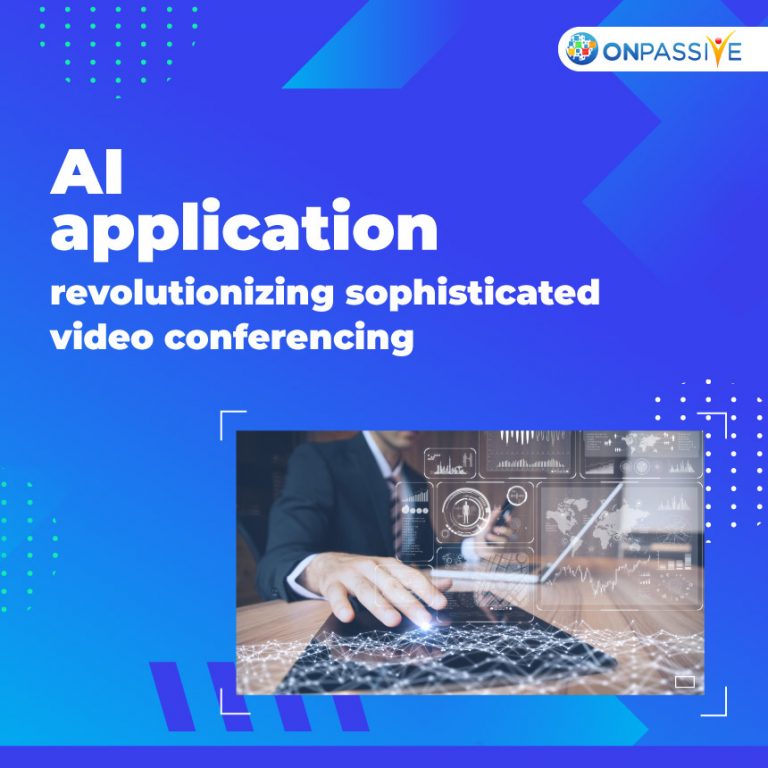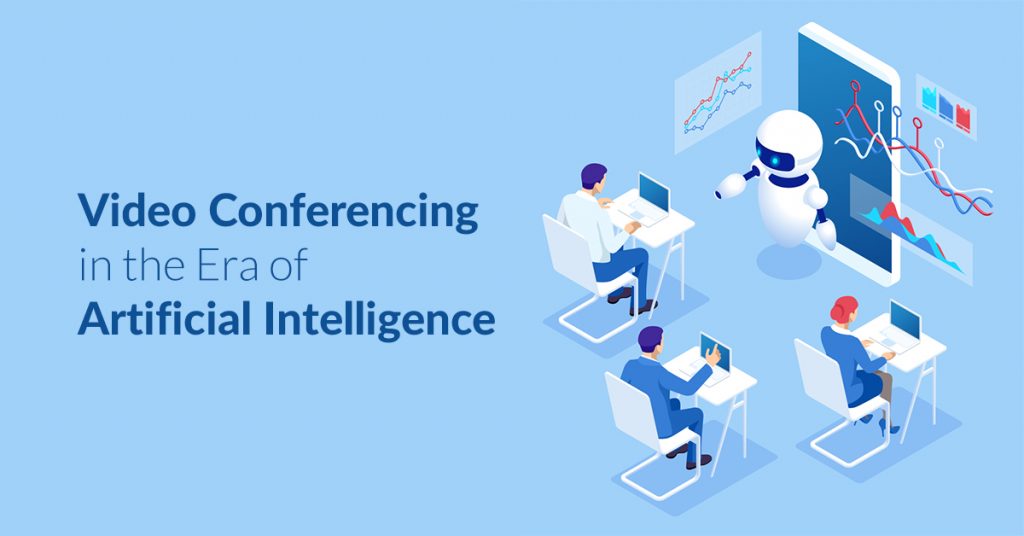
Most of us are familiar with the term AI, thanks to science fiction. As technology is advancing, Artificial intelligence is becoming a regular tech with several applications. One of these applications is video conferencing.
Integration of AI-capabilities into Video Conferencing Systems can Add a Real Value.
Boardrooms for formal presentations and meetings use video conferencing systems. Now, the system has evolved, and businesses are shifting their focus on creating a flexible working environment. The video conferencing industry is likely to blow up with the emerging Artificial Intelligence applications.
Covid-19 pandemic marks a milestone on video conferencing sector. More enterprises and government organizations consider video conferencing an ultimate solution to connect with remote workers, customers, and employees. 43% of small and in-house teams use video conferencing solutions, and 73% of corporate companies use video-calling software.
It is not surprising that a growing number of businesses are investing in huddle rooms and multi-purpose breakout areas equipped with video devices. Artificial intelligence is not only revolutionizing the way we design technology but how we use it. Big data analytics, computer vision, and NLP will control a sophisticated and futuristic video conferencing systems.

It adds real value by bringing these capabilities into the most commonplace devices like video conferencing systems.
Voice-to-text Transcriptions
Workplaces are rapidly shifting to cloud systems. The only way to gather the employees and hold a meeting during remote working is through video conference. Unfortunately, the usual difficulties like people talking over each other, going off-topic or going unheard remain concerns. Voice-to-text transcriptions become saviour at times.
However, Machine learning helps figuring-out accurate words and transcribes conversations. It identifies each speaker and segments their part of the meeting. Transcription technology allows them to find specific content and prevents confusion or misunderstandings. This technology also breaks the language barrier by transcribing any language spoken to English or any other common language in real-time.
NLP to Sharpen Speaker’s Voice
Natural language processing is an application employed in the video conferencing systems. Currently, the application helps to muffle background noises. NLP automatically suppress echo and minimize background noise. This technology is capable of filtering human voice from other sounds like wind blowing or paper rustling. If NLP espoused with evolving techniques such as automatic levelling and beamforming, everyone in the meeting is comfortable to hear.
Analyzing the Meeting Rooms
Artificial intelligence is well-known for its analytics and decision-making technology. Leveraging these fantastic features in video conferencing will further unfold possibilities. AI analytics track the meeting’s length goes to find what does and doesn’t work for you. AI also make predictions to suggest apps files that might need during the virtual meeting. They also offer insights into your appointment schedules. AI analytics gives real-time insights into the meeting’s flow, making it easy to abstract the actual content. It eventually assists the call’s technological background by tracking where people’s internet might struggle and adjust accordingly to avoid call dropouts.
Computer Vision Stabilizes Video Call Visibility
Computer vision provides a clear and clean video experience to users. Computer vision frames automatically adjust the zoom to deliver a better time for those on far ends. It also follows people’s movements, which is excellent if they need to get up or show something in the background. Computer vision is already doing well in covering the experience required to give people working from home a sense of privacy. In future, this technology expected to leverage further options like adjusting the colour, balancing lighting issues, unstable stand-by cameras and allow for an interactive background.
Live Chatbots and Virtual Assistants
The face of marketing is interactive. During lockdowns live chatbots and virtual assistants have come to the rescue to help manage cumbersome customer support workflow. AI-powered chatbots provide a consistent on-brand user experience in addition to intersecting your email marketing and CRM for easy flow-up workflow. Chatbots and virtual assistants recognize behavioural changes of consumers and act accordingly to address their needs.
The Future
The fields of AI and unified communications continued to grow with more advancements.
We expect to see more links to augmented reality (AR), allowing real-time, interactive imagery. Instead of relying on a static screen of a graph, it could use a 3D representation of data that participants adjust to their own needs.
AR makes more things possible over video calls. It may share a 3D representation of a product, rather than show people in person. It could use AR to diagnose tech issues, without needing an IT specialist to coming to the office. It helps in making video conferencing even more practical and commonplace.
NLP looks set to thrive, and real-time language translations began to be a realistic prospect rather than a sci-fi dream. AI making video conferencing easily accessible to teams who otherwise might have difficulties in communicating. It can converse with a global team without language barriers getting in a way.
AI continues to improve video conferencing in upcoming years. It is worth investing the time to familiarize with it to take advantage of these exciting new developments.



Dương Văn khoát
3 years ago
Naina Mohamed
3 years ago
STEMLER JANOS
3 years ago